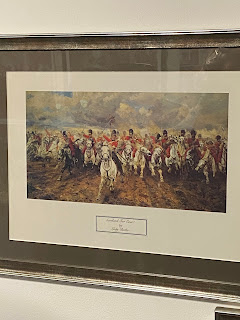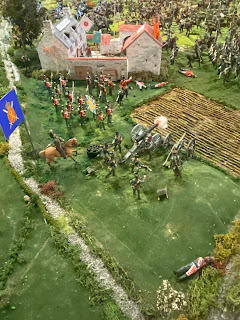There was still remaining a small section of the 12th Century walls, which had been part of the Norman Motte and Bailey fortification.
Our local (here on Vancouver Island) terrain expert might have some real value to gain from these images, which is a big reason why I took the time to get these photos.
weather was gorgeous on the day, with fair weather cumulus the only clouds
Obviously there are 300 years more of moss accumulation, plant adjustment to the nearly 1000 year old walls, yet still the color and presentation of these walls can be seen.
After visiting the commercial museum, or perhaps merchant museum (?) where the merchant history of Drogheda was showcased, we did a little road trip into town to view one of the last gatehouse towers that still exist from the 12th Century outer walls.
 |
the reason why this place was so defended
it made life worth living in so many ways
|
 |
what the city would have looked like in plan
just before the English sieges began
|
 |
St Laurence's Gate
|
 |
with my bride and I for scale ...
|
 |
St Laurence's Gate as seen from the inside
of the defensive perimeter
|
we then went on to Four Knocks, a stone age/iron age site, with a similar history and carvings as Newgrange.







































































































.jpg)























